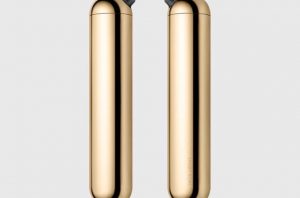It’s no secret soft drinks are brimming with sugar. Nor is it news that soda, as well as other sweetened beverages such as fruit juices, bottled iced teas, and energy and sports drinks, are suspected to play a role in the increased risks of obesity, heart disease, type 2 diabetes, and cancer that are associated with a high intake of sugar.
If you’re a regular imbiber of sweetened beverages, you aren’t alone. In 2009, for example, the total sales of fizzy beverages reached $18.7 billion dollars, or around $5 billion more than total milk sales, according to the Academy of Nutrition and Dietetics. If you suspect you may be downing more sugar than is healthy (or that your soda-sipping kids are), read on to learn how much sugar (including other common sweeteners such as high-fructose corn syrup) is too much, the amount of sugar in popular beverages, and ways to tame a sweet tooth in order to kick a sweet-drink habit.
How Much Sugar Is Healthy?
The short answer: none. There’s no recommended daily allowance for sugar because it offers no nutritional benefits whatsoever. The only thing added sugar and other sweeteners bring to the table are calories. So rather than advise people to get a certain amount of sugar in the diet, groups concerned with nutritional health all suggest specific limits to the amount of added sugar people eat or drink each day.
For example, both the World Health Organization (WHO) and the American Heart Association (AHA), recommend that women take in no more than six teaspoons of sugar per day, which amounts to 25 grams or 100 calories worth of sugar, and that men get no more than nine teaspoons of sugar per day (38 grams or 150 calories). The American Academy of Pediatrics also caps sugar intake for kids between 2 and 18 at six teaspoons per day. Note that these recommendations do not apply to sugar that naturally occurs in foods, including the fructose in fruits.
Sugar in Common Beverages
Keeping in mind that depending on your age and gender you should try to limit your intake of added sugar from all sources, not just soda and other sweetened beverages, you may be shocked to realize just how much sugar and calories are in a single such drink. Here are some examples of the approximate amount of sugar in a 12-ounce serving of several popular beverages:
FACT CHECK ALL NUMBERS
* Cola = 39 grams of sugar and 140 calories
* Orange soda = 44 grams of sugar and 160 calories
* Clear (lemon-lime) = 38 grams of sugar and 140 calories
* Sports drink = 21 grams of sugar and 80 calories
* Sweetened bottled iced tea = 35 grams of sugar and 135 calories
* Vitamin-infused water (20-ounce bottle) = 32 grams of sugar and 120 calories
* Sweetened cranberry juice “cocktail) = 38 grams of sugar and 165 calories
* Caffeinated energy drink = 41 grams of sugar and 165 calories
* Apple juice (10 ounces) = 32 grams of sugar and 140 calories
* Coconut water = 13 grams of sugar and 60 calories
*
It’s also important to note that most of the calories in these beverages are “empty,” meaning they have little to no nutritional value. Even the potential benefits of certain drinks—the vitamins in fruit juice, for instance, or the urinary tract health boost provided by cranberry juice, are minimized by their excessively high sugar content.
How to Cut It Out
Drinking an occasional soda probably won’t hurt you so long as you keep your daily intake in check. If you have an insatiable appetite for soda and other sweet drinks that you’d like to overcome, here are some tips from the American Academy of Nutrition and Dietetics you might try:
Taper off. If you or your child is downing super-size servings of soda or other sugary beverages each day, it will be tough to go cold turkey. Your goal is to cut back to no more than 8 to 12 ounces, or none at all, per day. To get there, note how many ounces you typically drink in a day and then come up with a reasonable plan to decrease that amount by 2 or 3 ounces every few days until you reach the goal.
Order a fountain drink with ice. You’ll get dramatically decrease the amount of sugar this way. In the case of soda, for example:
* 12-ounce cup (child-size): 23 grams of sugar and 95 calories
* 16-ounce cup (small): 31 grams of sugar and 128 calories
* 21-ounce cup (medium): 44 grams of sugar and 180 calories
* 32-ounce cup (large): 65 grams of sugar and 267 calories
*
Switch to diet drinks. These typically are sweetened with artificial sweeteners such as aspartame that have zero calories but are made from chemicals that have no nutritional value. What’s more, many artificial sweeteners have a high glycemic index which means that cause blood glucose levels to rise after being consumed. This means they aren’t safe for people who have diabetes.
What’s more, while diet beverages don’t add extra calories to a person’s daily intake, and so they can be useful for weight loss, research has found that people who have diet soda every day are at an increased risk for metabolic syndrome and for diabetes. So although downing the occasional soda or other beverage sweetened with fake sugar is fine for satisfying an occasional craving, it probably isn’t a healthy option overall.
Fill in the beverage gap with healthier alternatives. Diet sodas are a better option than regular sodas, but with meals, it’s best to drink water or low-fat or skim milk. And when it comes to quenching your thirst between meals? Plain old water is the best way to go.
Click here for our recommended fitness and health supplements.





